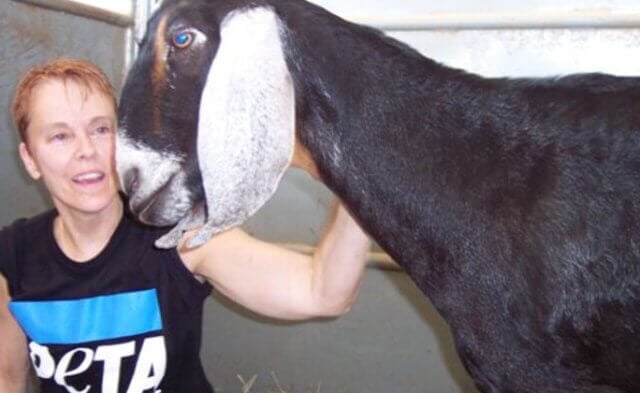I’m a vegan interior designer, so I use only materials and objects that don’t originate from any living creature and aren’t tested on animals. The vendors and sources I have relationships with have been carefully selected to ensure that they’re offering me vegan options.
When shopping for furniture or clothing, at first look it can be difficult to tell faux fur from real fur, and as informed consumers, it’s helpful to know strategies for keeping your home and closet vegan. I previously believed, as I’m sure many consumers do, that real fur was more expensive than fake fur. But that’s often not the case. In countries such as China, where most fur comes from, conditions are deplorable for the rabbits and raccoon dogs who are killed for their pelts. Farmers use the cheapest methods to confine and kill animals—and these almost unimaginable conditions make fur items cheaper to produce. The business of animal skins is huge—worth over $40 billion globally.
With fur trim on coats, fur hats and other smaller items, and fur on vintage furniture or clothing, it can be tricky to tell what’s real and what’s faux, so here are some tips on differentiating between the two:
- The next time you’re looking to buy a product made with faux fur, separate the fur and look at the base. If you see fabric backing, it’s fake fur. If the base looks like leather, it’s likely real fur.
- The tips of faux fur are often blunt, whereas those of real fur are pointy.
- If you own the item, light a match and burn some of it—if it smells like burnt hair, it’s real fur. If it smells synthetic, like plastic, it’s fake.
- Do a bit of research. Google the company to see if it’s been featured in any negative stories about selling fur.
- Shop at online or brick-and-mortar stores that are vocal and transparent about their ethics. Donna Salyers’ Fabulous-Furs, Stella McCartney, Ralph Lauren, Tommy Hilfiger, and Giorgio Armani are all fur-free and have proudly communicated that ethical stance.
- Take time to read labels and tags.
- Double- and triple-check the information that sales people relay. I can’t even count how many times a salesperson told me an item was faux when it wasn’t. You must take it into your own hands to verify things you’re told.
Finally, please read goddess Pamela Anderson’s letter to Kim Kardashian urging her to “do the right thing” and “stop wearing fur.” We love you, Pamela!







